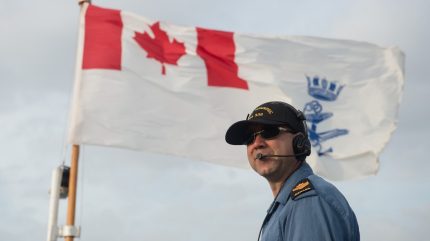
Canada’s Prime Minister Justin Trudeau, alongside his Defence Minister Bill Blair, released a defence policy update that will appropriately equip the Armed Forces to face new global security challenges.
The accelerating rate of climate change in the High North, securing Nato’s western boundary and global strategic competition are among the country’s reasons for a substantial boost in its defence expenditure.
Canada will start to invest C$8.1bn ($6bn) over the next five years, and C$73bn over the next two decades.
Although, the nation’s 2024 defence budget is currently due to grow to 1.7% of its gross domestic product by 2029-30, a “step forward in our efforts to reach the Nato commitment of 2% to which we agreed at the Vilnius Summit in 2023,” the Government acknowledged.
One major concern will be Canada’s capacity to cultivate an innovative defence industrial base. Over the next 20 years, the Government has pledged C$9bn to sustain military equipment; C$9.5bn to accelerate the establishment of new artillery ammunition production and invest in strategic supplies; and C$107m for its participation in Nato’s Innovation Fund, which offers additional funding streams for its own entrepreneurs.
As part of its national defence over the same period, Canada will appropriate C$1.4bn to acquire specialised maritime sensors to conduct ocean surveillance; C$222m to build a new satellite ground station in the Arctic; C$18.4bn to acquire more modern, mobile tactical helicopters; C$2.8bn to stand up a joint Canadian cyber operations capability and a Communications Security Establishment; and renew and expand its submarine fleet.
How well do you really know your competitors?
Access the most comprehensive Company Profiles on the market, powered by GlobalData. Save hours of research. Gain competitive edge.

Thank you!
Your download email will arrive shortly
Not ready to buy yet? Download a free sample
We are confident about the unique quality of our Company Profiles. However, we want you to make the most beneficial decision for your business, so we offer a free sample that you can download by submitting the below form
By GlobalDataCanada’s investments point to their vital interest in the Arctic region. As two large northern countries, geography would dictate that Canada and Russia have overlapping concerns and interests.
However, Russia’s resurgence on the international stage in recent years has driven bilateral relations between the two to a hostile low point. Sanctions were applied to the Russian economy after its 2014 annexation of Crimea, and further restrictions since their 2022 invasion of Ukraine.
Since 2015 Canadian troops have helped to train the Ukrainian military, and has now donated ammunition, artillery, drones and other equipment to help counter the Russian invasion. Owing in part to its large Ukrainian diaspora, the Canadian parliament has also voted to label Russia’s actions an act of genocide.
As an Arctic nation, Canada has core interests in economic and security developments in this region: Russia has re-opened over 50 military installations in the area, and regularly conducts exercises there.
It is also expanding its navy with more warships and ice-breakers capable of operating in the Arctic. As climate change melts icecaps and makes the Arctic more accessible both for trade and mining for resources, this region will only become more relevant for Canadian security, and act as an arena of competition between itself and Russia.







